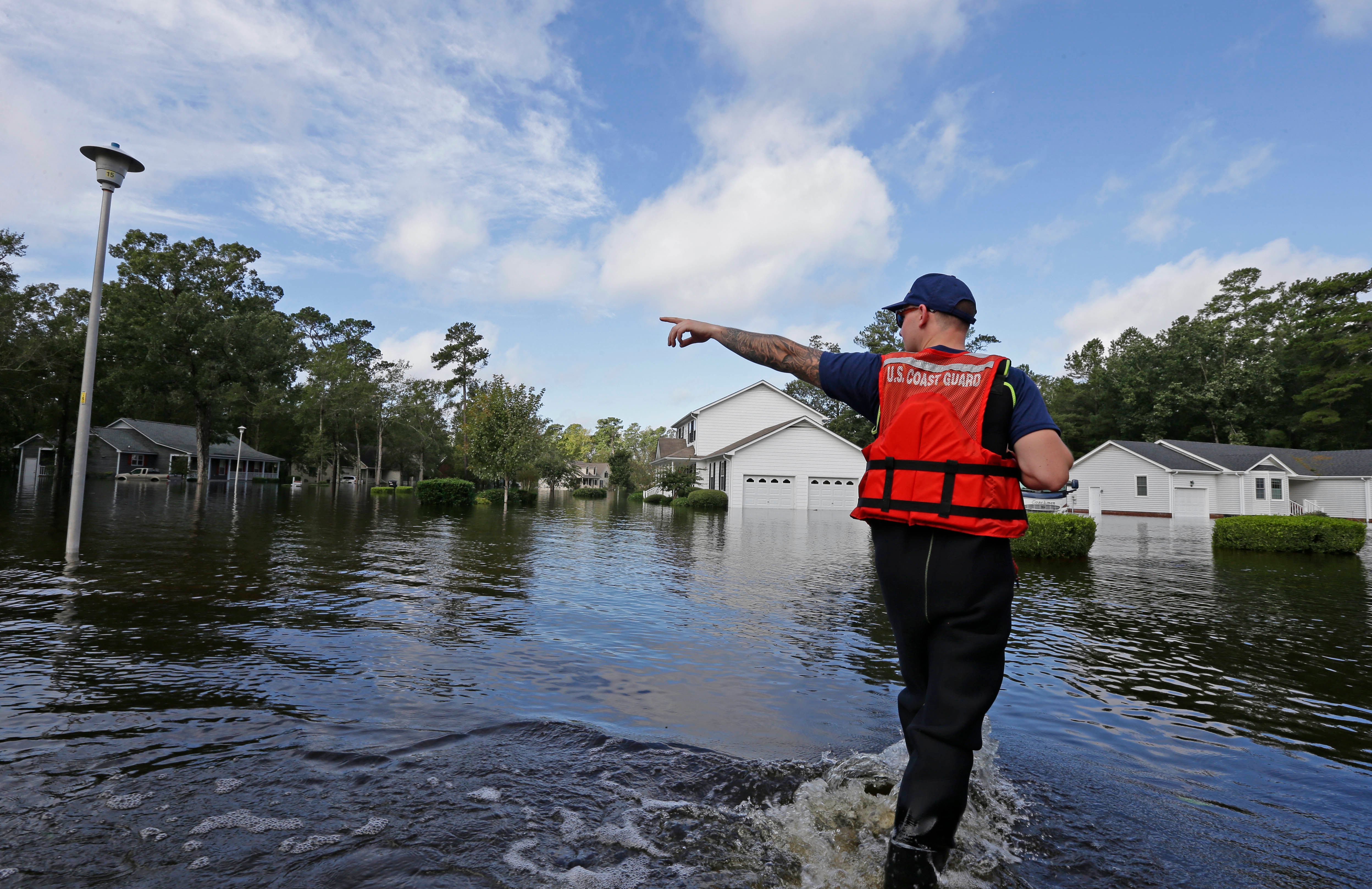In the summer and fall of 2017, Hurricanes Harvey, Irma and Maria ravaged parts of the United States, while California wildfires scorched more than 1 million acres of land. At the time, the Federal Emergency Management Agency was largely unprepared for the series of concurrent natural disasters that hit the country.
One year later, the hurricanes are more spread out, but officials agree the agency still needs to plan better for more extreme natural disaster seasons. The 2017 hurricane season stretched FEMA’s limits, as the series of three hurricanes that made landfall within a single month strained agency resources.
Atlantic hurricane season generally runs from June 1 to Nov. 30 each year, and peaks from about mid-August to late October, according to the National Hurricane Center website. The Pacific hurricane season begins slightly earlier in mid-May.
RELATED
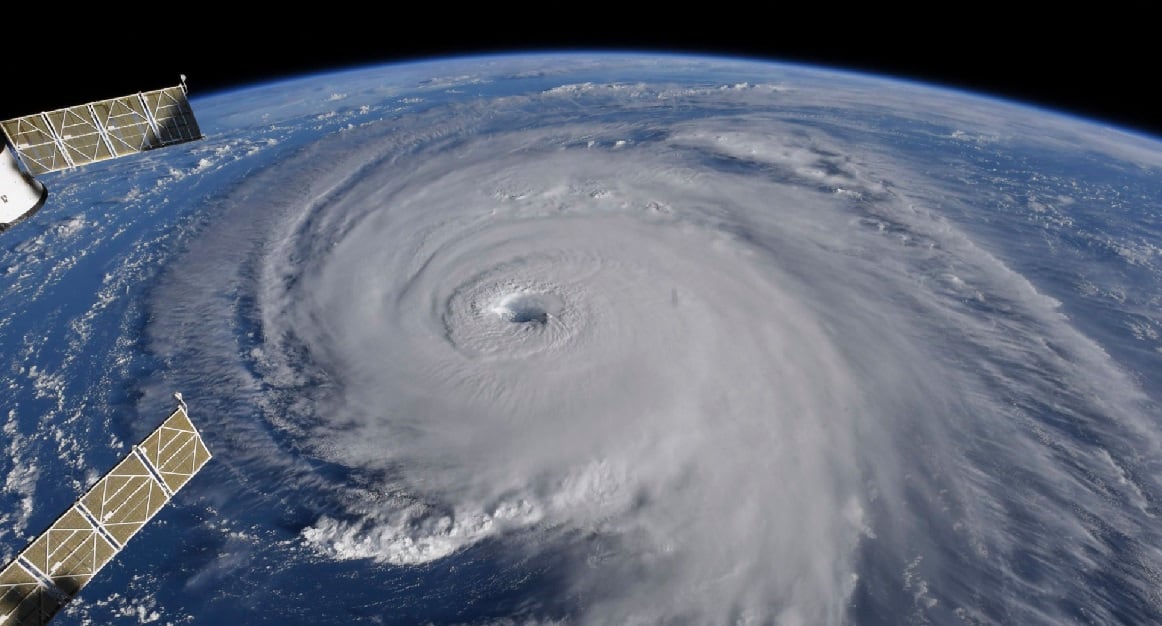
According to a Sept. 4 Government Accountability Office report, workforce shortages, logistical challenges and limited preparedness for such severe storms slowed and complicated the response to Hurricane Maria.
“In Texas and Florida, and then California with the wildfires, the response was about as we would have hoped it would be and planned for it to be. Not that there were not challenges. There were absolutely challenges domestically, but we were able to overcome those with some of coordination mechanisms that we had,” Christopher Currie, director of Emergency Management and National Preparedness Issues at GAO, said in a Sept. 4 GAO Watchdog Report podcast.
“Hurricane Maria was another story, and Puerto Rico. What we had was basically everyone being overwhelmed. The territorial government was overwhelmed, FEMA was overwhelmed, and what we saw was basically FEMA had to call in the cavalry after they understood exactly what was happening. Literally, they had to bring [the Department of Defense] in to provide much of that support, way more so than DoD has provided in any other disaster.”
The federal government deployed tens of thousands of personnel between September and December of 2017 to address Harvey, Irma, Maria and other natural disasters.
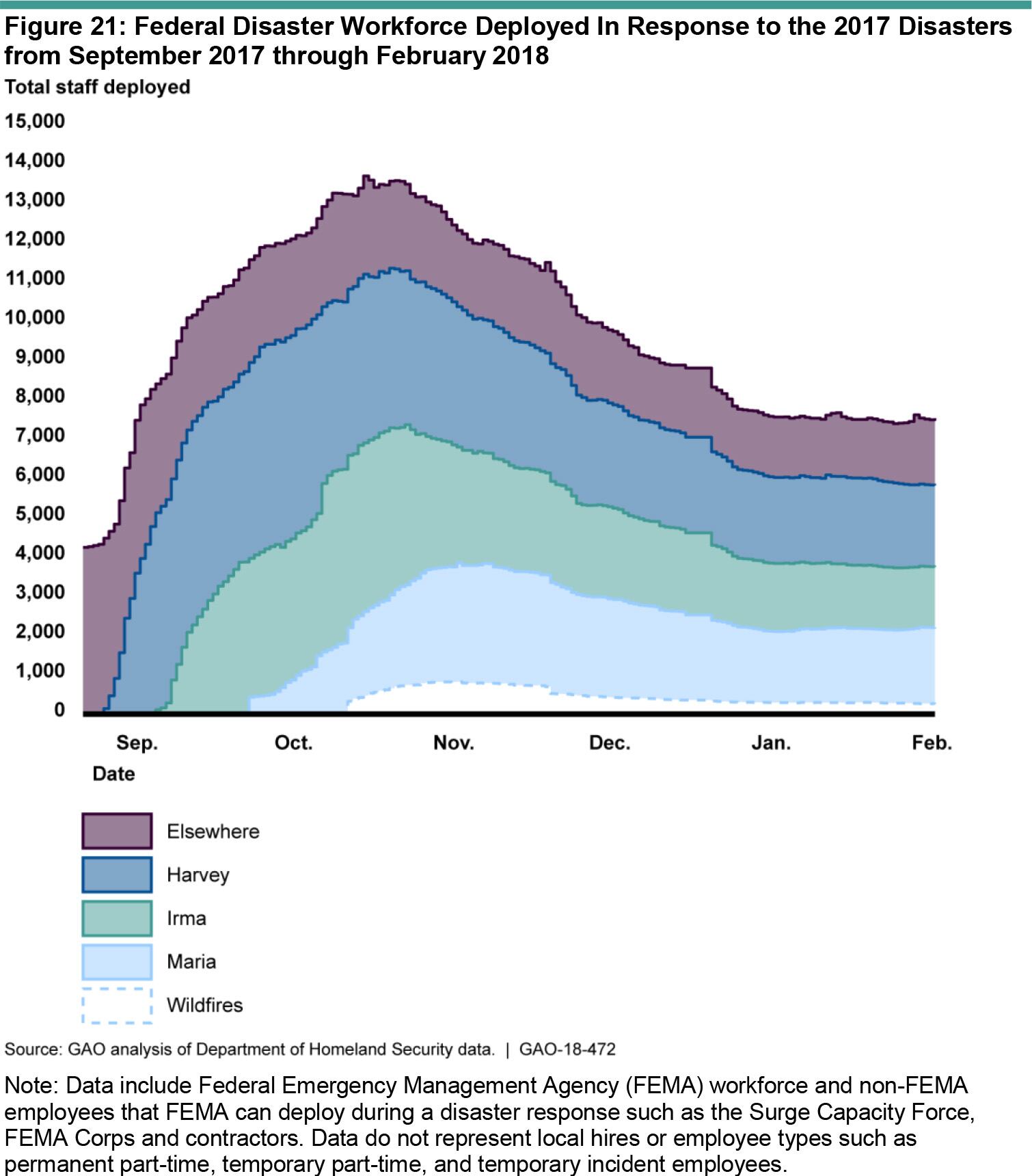
But FEMA’s strategic goal was only to maintain a workforce that was capable of responding to two concurrent natural disasters. With hurricanes and wildfires, the agency was forced to respond to double that.
“Because the disasters were sequential, FEMA had already deployed many of its staff and most of its highly trained staff to Florida and Texas. So when Hurricane Maria hit, they couldn’t quickly redeploy those folks to be as ready as they wanted to be there,” said Currie.
The GAO report found that FEMA had a 37 percent staff shortage at the time of the hurricanes, with nearly half of the agency’s deployed workforce serving in roles for which they were not officially qualified.
“According to the [federal coordinating officer] for Hurricane Harvey, limited funding dedicated to training also hampered the agency’s ability to meet basic training needs. This resulted in FEMA delivering aspects of the training even as the Surge Capacity Force actively responded to the disasters,” the report said. “FEMA officials stated that in the absence of required training, they developed just-in-time training, as well as hiring contractors to provide training locally.”
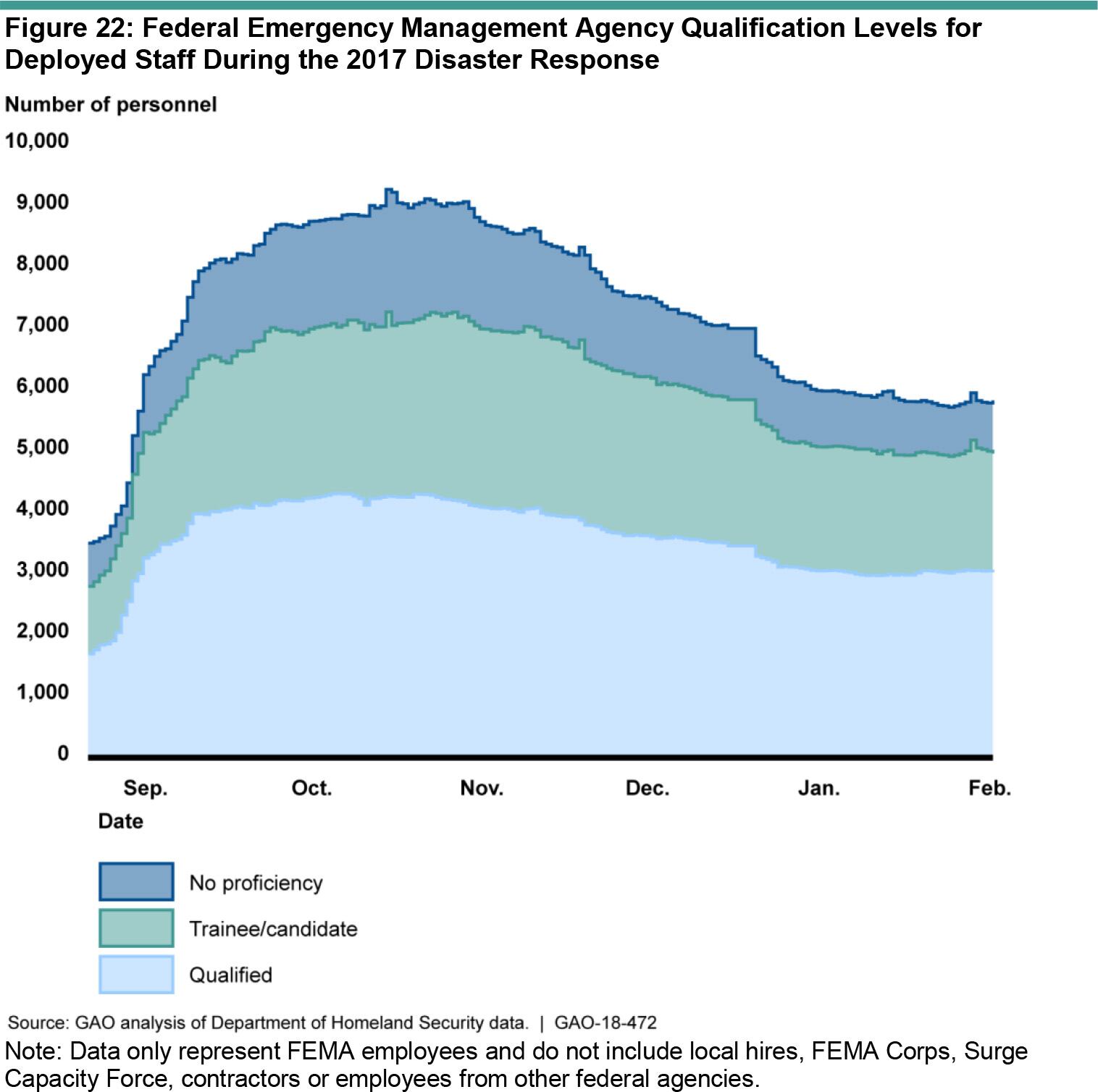
The report also found that FEMA took the lessons and challenges from the 2017 hurricane season and applied them to its approach for the 2018 season.
“Based on this experience, FEMA has taken action to increase preparedness for the 2018 hurricane season by updating hurricane plans, annexes and procedures for states, tribal lands and territories,” Jim Crumpacker, director of the DHS Departmental GAO-OIG Liaison Office, wrote in response to the report.
“FEMA has also made improvements in staffing for incidents, logistics operations and refining communications from land mobile radios to satellite communications. Finally, FEMA has updated high-priority national-level contracts to be better prepared to cope with responding to multiple concurrent disasters across the nation.”
FEMA made changes to its approach for responding to natural disasters by identifying seven “lifelines” to reestablish in the wake of the destruction: safety and security; food, water and sheltering; health and medical; energy; communications; transportation; and hazardous waste.
“Those are the areas of our focus, and this is a big sea change for us as an agency,” Alex Amparo, deputy assistant administrator of the FEMA National Preparedness Directorate, said in a Sept. 13 press call.
“As the interagency among the federal family, we are organized in this way to look at these seven critical lifelines, of which we will provide support to governors and help reestablish any deterioration in the lifelines.”
In September, FEMA also introduced a new website to combat rumors about Hurricane Florence, including claims that FEMA played a role in enforcing evacuation orders or that the agency did not have enough supplies on the ground in preparation for the hurricane.
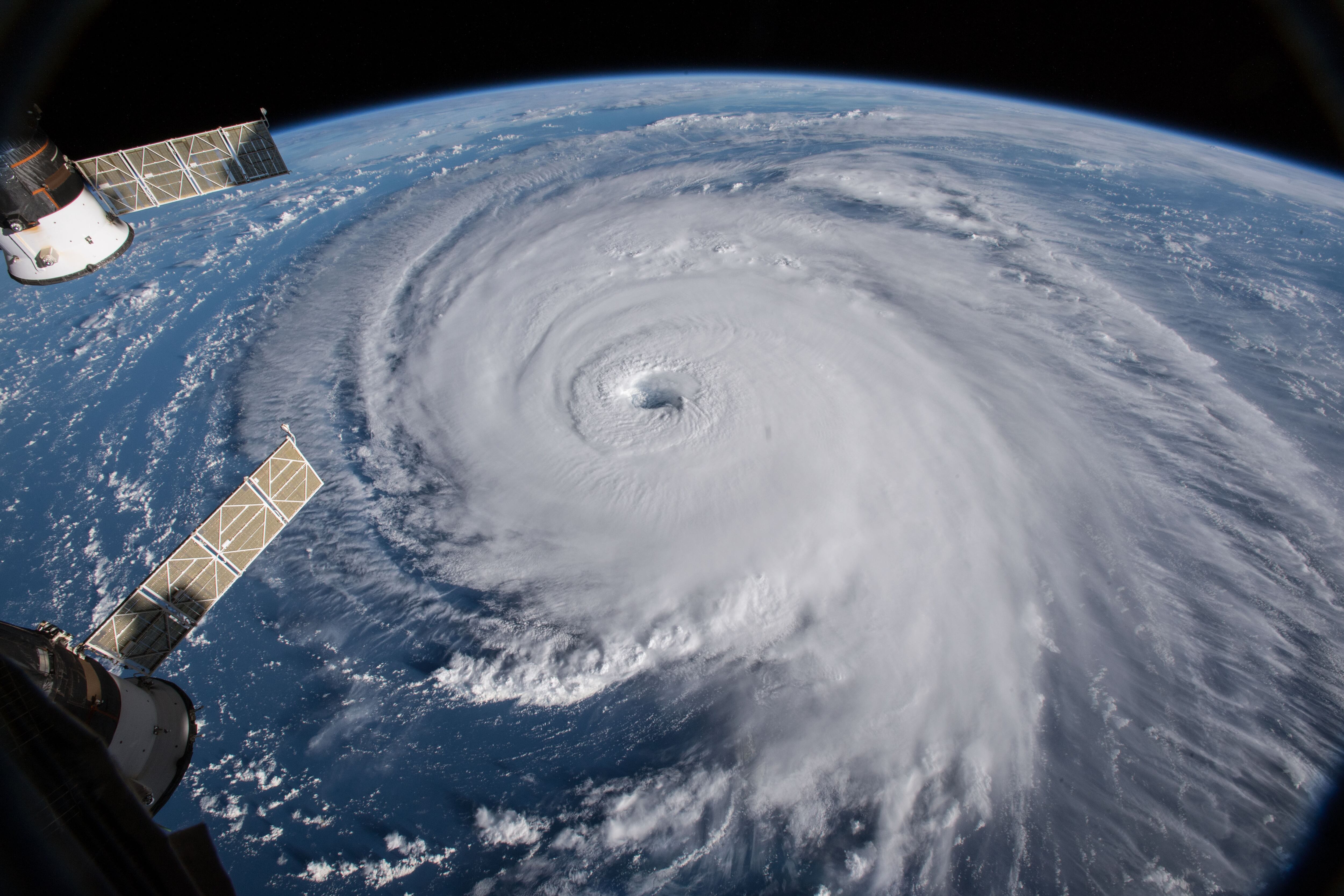
Just after Hurricane Florence made landfall on the North Carolina coast Sept. 14, the government had deployed more than 3,800 federal employees, including more than 1,000 FEMA employees, more than 1,200 search-and-rescue personnel, as well as 560 Health and Human Services personnel, Amparo said in a press call that day.
The deployment included six incident management assistance teams, typically made of 10 senior-level emergency management personnel “first in” during a disaster. The Florence response also included 14 FEMA urban search-and-rescue task forces, four HHS disaster medical assistance teams, one HHS incident management team and nearly 1,000 emergency assistance compact member teams, who deploy from other states to aid disaster-affected areas.
Amparo called the deployment “a tremendous convergence of resources from federal agencies, not to mention what was [previously] reported as nearing 40,000 power personnel from North Carolina and South Carolina that have been mobilized by the private sector to restore power as time allows.”
DoD also made more than 6,000 active military forces and 7,000 National Guard forces available for Florence response and recovery.
On top of this deployment, nonprofits, such as the American Red Cross, engaged thousands of volunteers to support recovery efforts — all of which FEMA is responsible for coordinating in any disaster response.
“FEMA’s role here is to bring the interagency together and national, nongovernment organizations together and make sure that we place at the doorstep of North Carolina and South Carolina every resource that they would need,” said Amparo.
According to the Sept. 14 call, communications between FEMA and the North Carolina and South Carolina governments confirmed that both states had the resources needed to respond to the disasters at the time. Amparo added that the lessons learned from Hurricane Katrina’s devastation of Louisiana in 2005 enabled organizations to begin staging supplies for recovery in nearby locations prior to the storm making landfall, which speeds emergency response.
And though Florence didn’t strike in the wake of multiple other massive disasters as seen in previous years, this hurricane presented FEMA with its own set of challenges.
According to Steve Goldstein, a National Oceanic and Atmospheric Administration liaison to FEMA who also spoke on the Sept. 14 press call, Florence was only moving inland at about 3 to 5 miles per hour after making landfall. That slow progress meant that the storm stuck around near the North Carolina and South Carolina coasts, dumping large amounts of rain and increasing flooding in those areas.
According to Amparo, the slow nature of the storm “does impact transportation and movement of people,” meaning that search-and-rescue “will be prolonged.”
Coupled with that, the DHS inspector general was investigating FEMA Administrator Brock Long for potential misuse of government vehicles, raising concerns that he could have been replaced in the midst of the agency tackling Florence’s fallout.
And even with all its preparations for 2018, FEMA may still have to brace itself for more frequent hurricane seasons that mirror 2017.
“With extreme weather events happening more regularly, I think we have to prepare for those types of events. We have to have our staff and the federal workforce ready to respond to those types of things,” said Currie.
“FEMA has to work with the local governments to understand the gaps and the weaknesses in preparedness.”
Jessie Bur covers federal IT and management.
